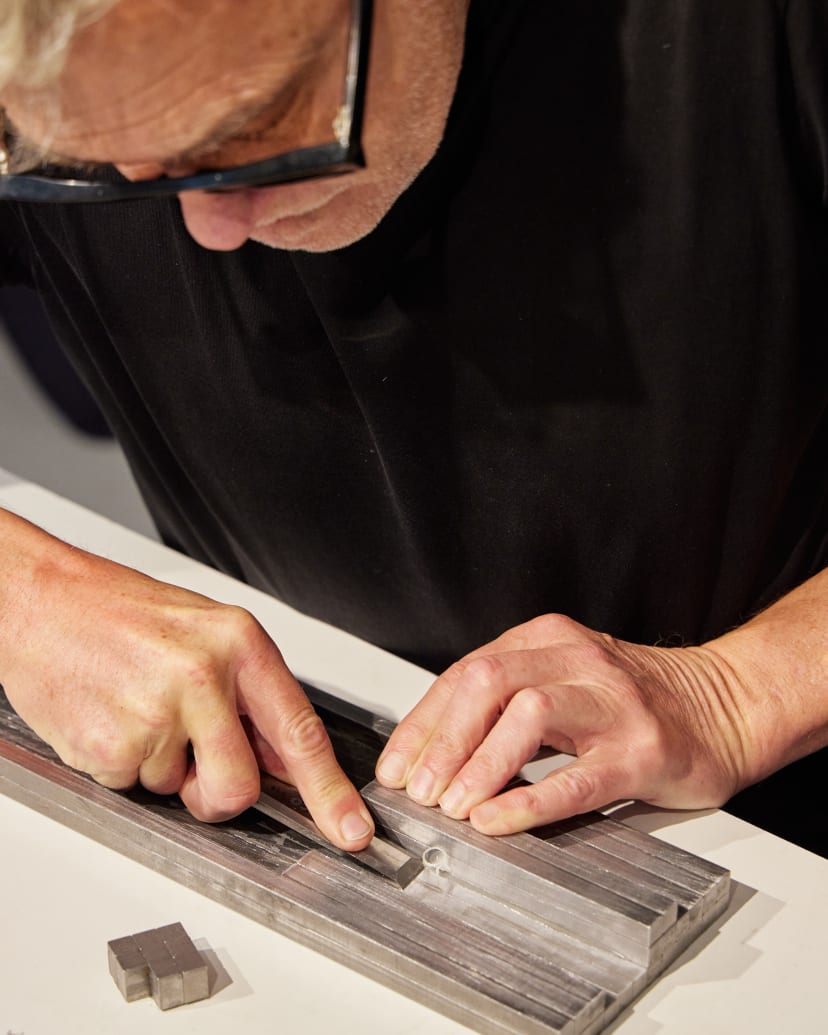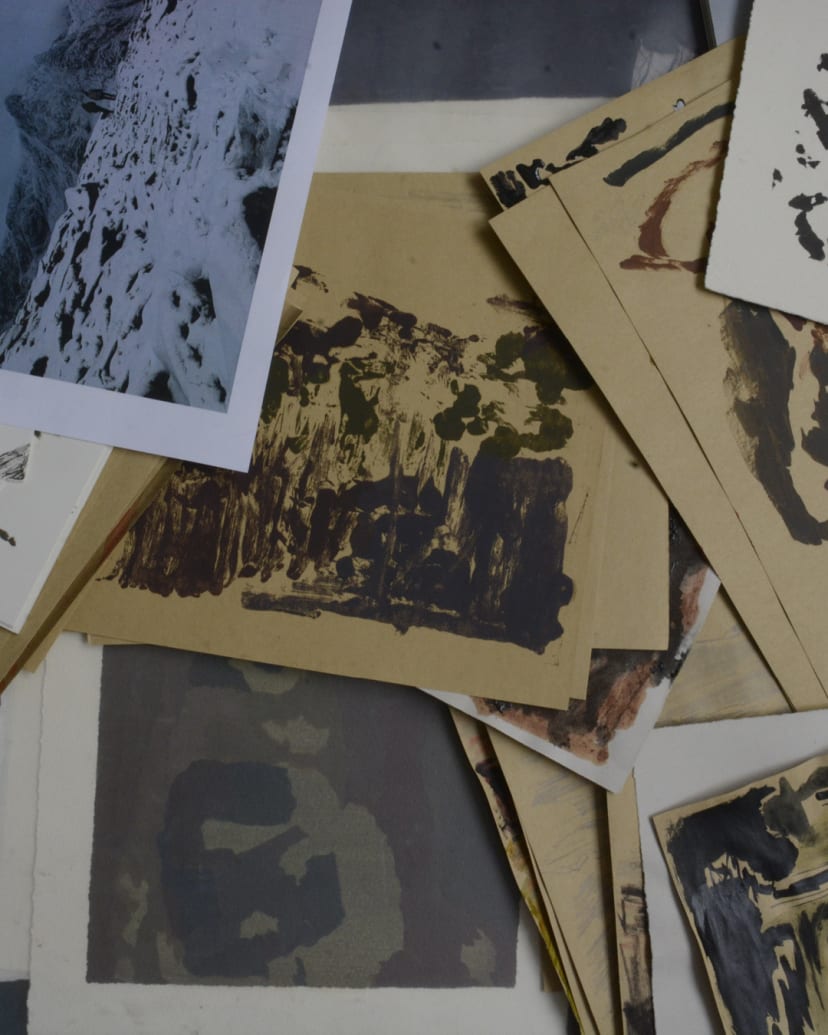
British Art At Albemarle

To coincide with Frieze London 2023, we’re hosting a curated showcase of new British art from six incredible artists at our Mayfair shop and exhibition space. We spoke to them about their work, inspiration, and what British art means to them.
There’s something particular about British art that you can’t always put your finger on – but often, it’s something you know when you see it. To celebrate all its idiosyncrasies, we asked six British artists to showcase their works at our shop and gallery space on Albemarle Street in Mayfair in a new exhibition British Art At Albemarle. Held to coincide with Frieze London 2023, it celebrates the variety of creativity coming out of these isles. Here, Niamh Birch, Isabel Fishlock, Caroline Hillier, Edward Jones, Daniel Pettitt and Tyler Watson explain the inspiration behind their works and what British art means to them.

Niamh Birch
Why did you become an artist?
I was never discouraged to study or pursue Art. I carried on after university making it halfway through a 10-month painting residency until the pandemic arrived, moved to the Irish countryside, and painted throughout the summer lockdown. My mum and I converted an old potting shed into a painting studio where friends, neighbours and farmers dropped round half-used tins of paint, tools, and brushes; it was a godsend. I sold my first work on paper which looking back now, was a minor albeit significant milestone that helped me believe people wanted to own my work. I knew there wasn’t a job that would force to me to think as hard and feel as much as painting does, leading me to where I am today.
Where do you find inspiration?
I take photos of scenes and objects like dinner-filled tabletops, quirky furniture, patterned wallpaper, characterful shoes and trousers, flamboyant front doors on houses. Anything that resonates with me at that moment in time – often it’s an instant decision to recreate a feature within the photo straight on to canvas, or it’ll take hours of ideas going back and forth with drawing in between. Alluring compositions within domestic interiors or exterior settings; I recently received flowers at an exhibition opening and lay them in the hotel bathroom sink overnight to keep alive. The tiled, cold floor and vast, beige walls juxtaposed with the vivid abundance of natural beauty became a scenic muse for my next painting.
How does being an artist affect your outlook on life?
Visually speaking, being an artist has heightened my sense of observation. I am always taking in my surroundings and environments, depicting, and appreciating everyday objects and scenes. As a result of still-life and interiors grounded within my subject matters, I notice aesthetic compositions, angles and find pleasing colour palettes and intricate details in various ordinary parts of life, from nature and architecture to design and fashion.
Through painting parts of the human figure and trying to solidify their character, I am studying peoples postures more so than normal, picking up on mannerisms and habitual gestures. These enhanced observations have led to alternative perspectives on beauty ideology and a greater outlook for the modest moments and nuances of life.
What does ‘British art’ mean to you?
The British contemporary art scene is vibrant in talent and character. The ever-growing number of emerging artists that are evidently committed to their practice, who work through the peaks and troughs and are a constant source of hope and motivation. While the British Art scene excels, visibly there is need for change. We need the opportunity to exposure and visible platforms within the contemporary art scene; especially women, ethnic minority, and LGBTQ+ Artists.
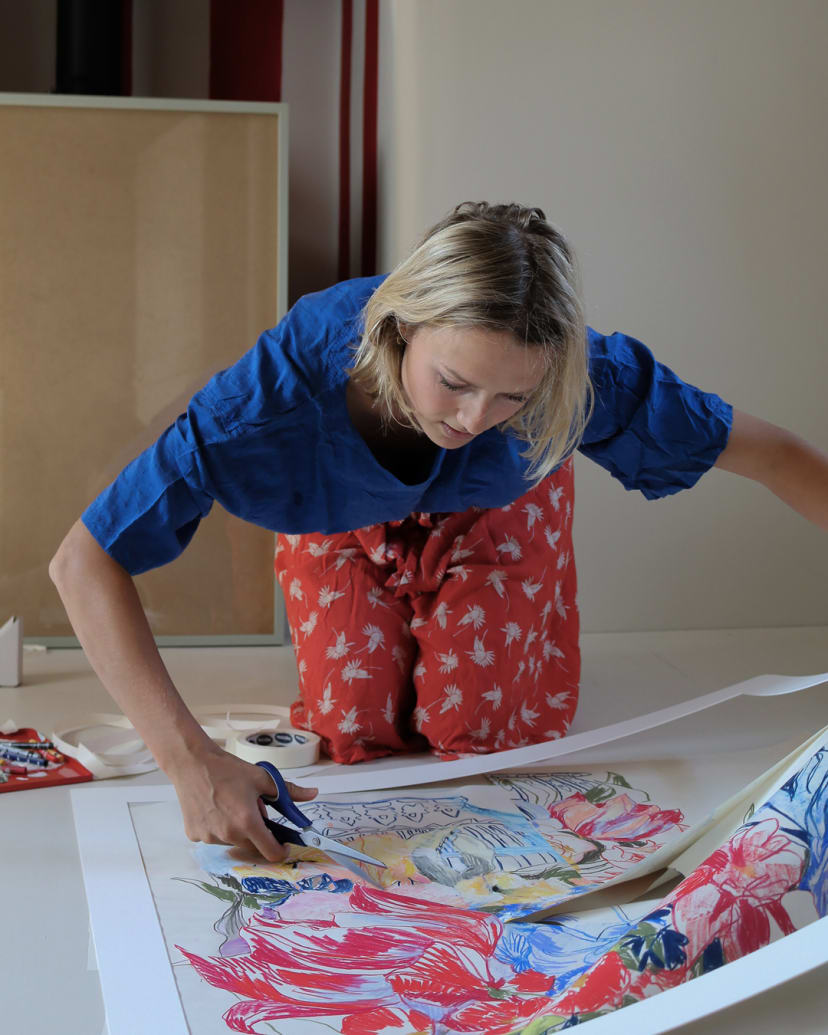
Isabel Fishlock
Why did you become an artist?
I don’t think it was a choice. Creating and making has just always been around me. My mum is very creative: I remember her taking me to rope-making courses, making me headbands with intricate silk vegetables on. And obviously I was that child at school who had a sunshine and animals painted onto her shoes… My parents had great fabrics, art, and pieces around the various houses they moved in and out of. One of the pictures I remember best was an Elizabeth Blackadder print. It is so perfectly painted; the colours chime so beautifully – it’s elegant. I loved it: I loved its light and I loved that it made home feel like a feminine space, even with three brothers. I think the power of emotion is something we should embrace in art and, as a female artist, I feel it’s something that can often get suppressed. I think we should ride with them! Bring on emotions!
Where do you find inspiration?
Mainly in nature. It’s all about the colours for me – it’s a cliché, but it’s true. Nature always gets it right. There must be an evolutionary reason, but nature always gets the tone, shade, light totally perfect – it feels universal. I don’t think I will ever be able to even get close to recreating it but it’s that lightness of touch that I so want to achieve, that nonchalance. The effortless lightness. There is nothing so draining and heavy as an overworked piece of art.
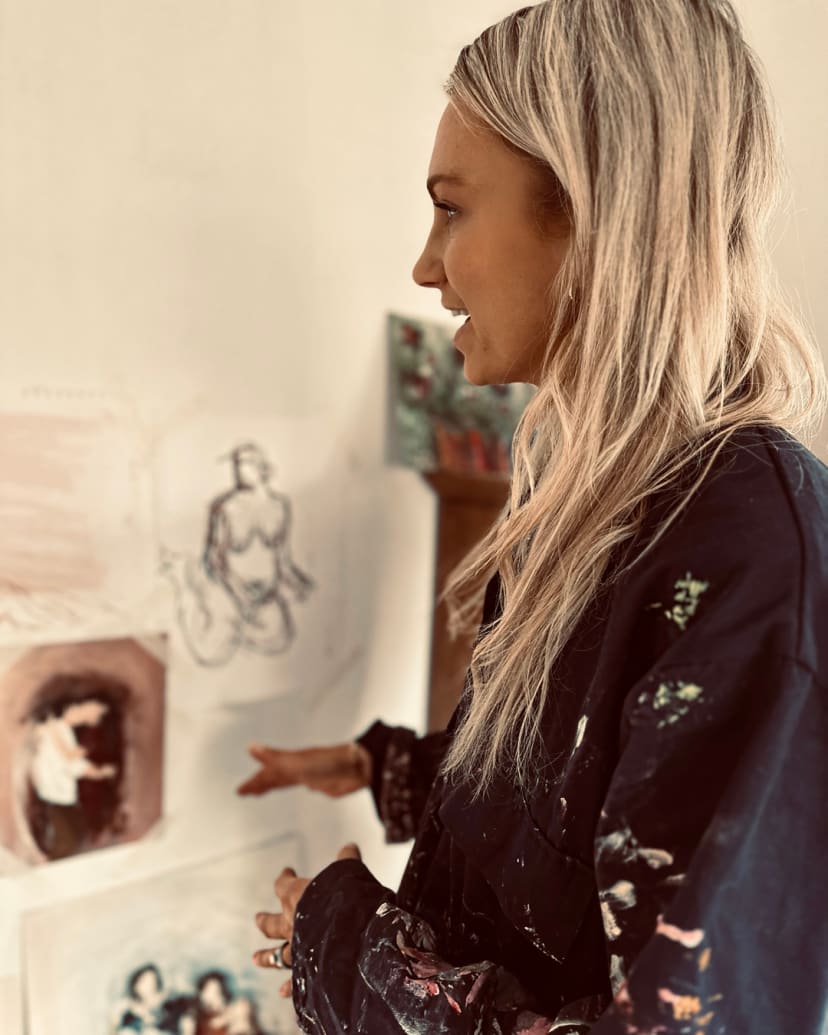
Caroline Hillier
Why did you become an artist?
I have always had a passion for drawing and painting, but it was only at college, when my tutor exposed the notion that art is the most profound medium to develop a connection to myself and others. When I was young, I remember seeing the work of Frank Auerbach and was so moved by the layers and storytelling in his work that my passion really developed from there.
Where do you find inspiration?
My greatest inspiration is from past experiences and traumas, drawing on memory and nostalgia, as well as from old family albums – both my own and found imagery. Films, music, literature, poetry, and of course other artists inspire my work daily. Sometimes it is a physical object or even a smell that can trigger a visceral response that I bring to my work, which is anchored by female identity and relationships. My inspiration is underpinned by a fascination with relationships, in particular the role that family plays in forming behaviours and character. My work is an attempt to document the feelings, experiences and memories of life and it is a response to me comprehending my place in the world.

Edward Jones
Why did you become an artist?
There has been, since my late teens, an extremely strong and unbreakable attraction to the creation of artworks. I felt such a strong sense of belonging within the art community at City and Guilds Art School, and this is where I found the spark that has driven me to exceed my own expectations. My practice as an artist is undoubtably the one thing that pushes me the hardest, and I feel privileged to pursue a career with unlimited creative boundaries and a plethora of development opportunities. Plainly, it is addiction to visualise ideas in colour and form.
Where do you find inspiration?
I like to find myself in moments where I can appreciate my presence in the natural world. Unburdened by the complexity of modernity. Reflecting on moments of purity and innocence is vital to my studio practice. I may have an idea or certain emotion that I want to act upon or speak of, but if I cannot relate to this simple state of mind, of connection and presence, then I find my workings or brush strokes futile.
These occasions I speak of mainly occur during long and exposed hikes in mountainous regions. I find a power in juxtaposing the feelings of insignificance in relation to our natural world with the pertinence and realness of human emotion.
How does being an artist affect your outlook on life?
Having the privilege to dedicate so much of my time to a somewhat selfish deed in making art, I feel enormously grateful and slightly unnerved.
In a habitual sense, I tend to look at things for a great deal of time. Trying to see where others don’t, to give attention to something that would otherwise go unnoticed. Some may say that it's part of the artists’ ego, having ambitions to constantly generate originality.
Seeing things in great detail is inordinately important to me and is most likely why I find so much incentive to grasp the uncertainty of dark settings. To say that being an artist directs or abides this custom is debatable. That being said, my interests and conducts are definitely swayed by the type of artworks I am working on.
What does ‘British Art’ mean to you?
Understanding the ties to British sentiment has always been slightly messy as a millennial. The production of arts in the United Kingdom feels to be speaking more and more of national culture and heritage in recent years, particularly of its complexities and morality. I am proud to be part of a lineage of British artists that will challenge the ideas of old, in the face of progression.
The triangular connection between British Art, landscape painting, and my personal affiliation between the two are becoming evermore apparent as I explore more of my Welsh and Irish heritage. This draws me into a fascination of land rights, spanning centuries and millennia. I am keen to venerate very personal landmarks; the icons of my childhood and early adulthood. Imagining these often neglected places as culturally important sanctuaries gives potency back to the rural in an ever-modernising society. This introspective outlook hopes to offer a self-aware comment on current affairs, overlapping with Britain’s colonial conduct.
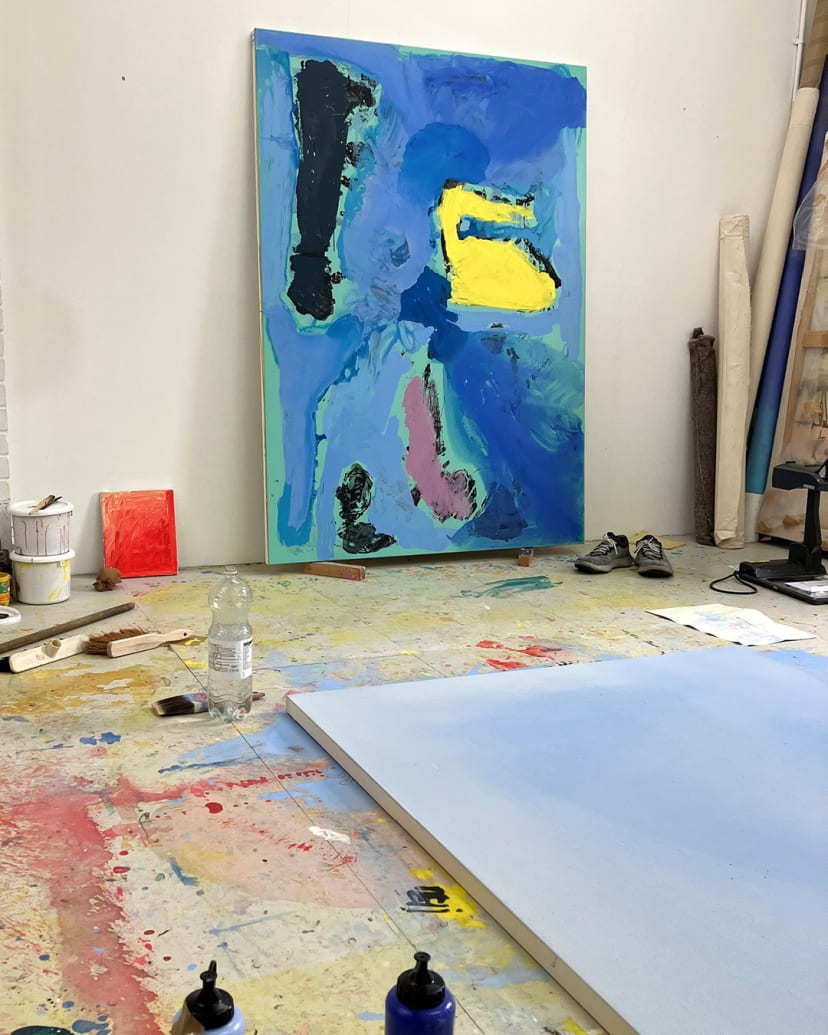
Daniel Pettitt
Why did you become an artist?
This was the way I could give form to my thoughts and ideas, unbound by conventions. I also want to surprise myself by what I paint, there’s a kind of enigmatic frustration to making visual things, I enjoy that. Better to put things into the world than just take.
Where do you find inspiration?
Observing and filtering what’s around me. Things linger in my mind, sometimes for years, before finding their way into a painting.
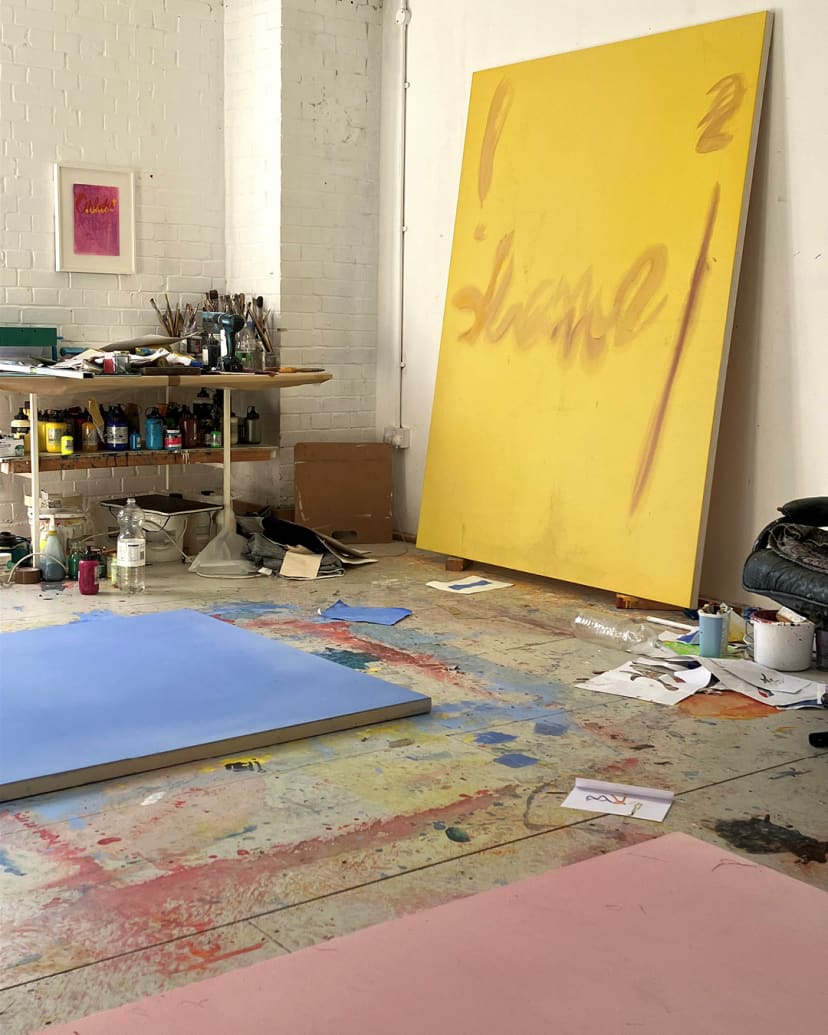

What do you hope people take away from your art? What are you trying to say?
I paint the things I want to see, that’s enough for me. If the work gets a reaction from other people, then that’s great, but not essential.
How does being an artist affect your outlook on life?
I take notice of most things – colours on a passing truck, formations of clouds, music overheard – often simultaneously. They all layer up. This heightened awareness permeates all aspects of my life and how I move about the world. There’s a resoluteness that comes with being an artist, a painter, a determination to make the work whatever the cost. It’s this single mindedness which makes it possible to weather any storm.
What does ‘British art’ mean to you?
A certain sensibility: obscure confidence mixed with acerbic humour, a kind of ‘either/or’ stance on life. For me, this forms a unique position to come from when making a painting.
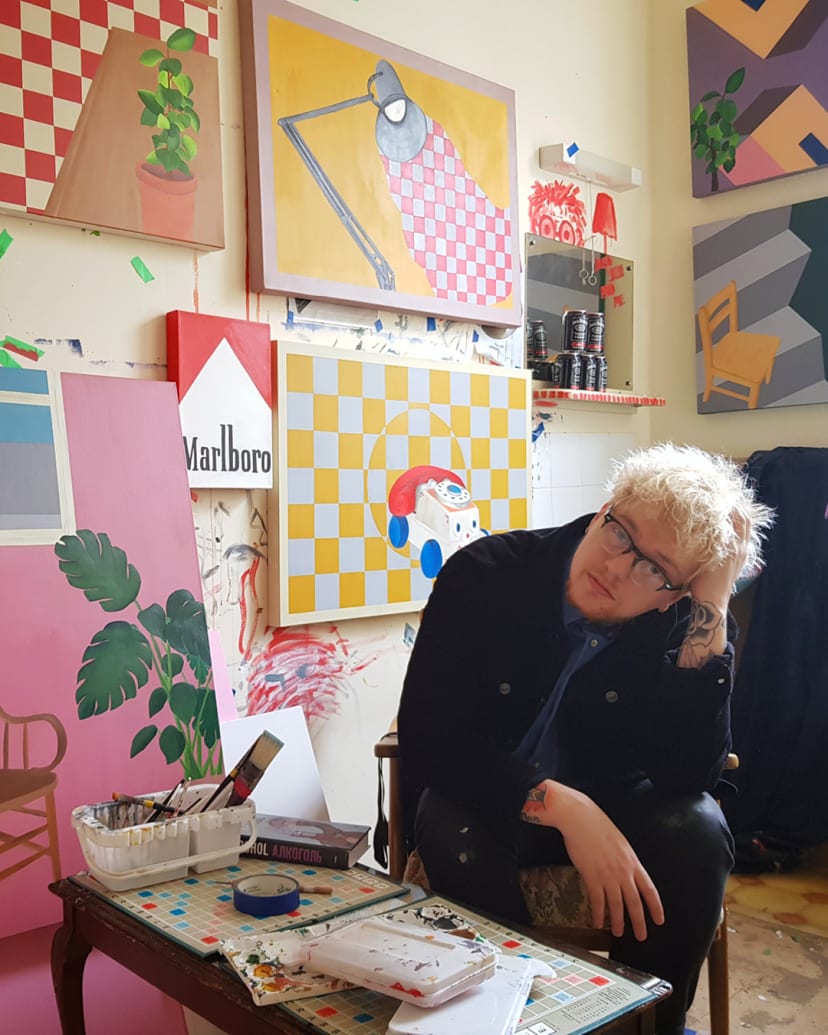
Tyler Watson
Why did you become an artist?
I became an artist as art is all I have ever cared about, to put it simply. The idea of creating something both beautiful and thought provoking with my own hands has always presented itself as a world of opportunity. From a doodle on a note pad to a painting on a canvas the practice of creating the ‘new’ or reimagining the already existing has taken hold of my life and become all I think about. I see art as invention and something new comes into the world each time I enter the studio and I think that’s exciting.
Where do you find inspiration?
My inspiration comes from everyday life, I’m influenced by the beautiful and bold as everyone is; but it’s the mundane, the ‘everyday’ objects and the staples of daily life that truly push me to create my work. I try to find the importance within objects and places that are so easily overlooked, bringing the mundane to higher esteem. These subjects can subconsciously sculpt our lives and reflect who we are, yet they can be thought of as boring, but maybe boring is important?
How does being an artist affect your outlook on life?
Being an artist makes me more investigative, I’m looking for answers in what I see – it gives me the want to know what’s behind the ‘surface’ of what I’m facing each day. I think being an artist has made me see the world as a more beautiful place, as I look at the world through my own understanding of composition, often looking as if I’m planning.
What does ‘British art’ mean to you?
British art to me, is art that represents home. I was once told to create work about what I know, and I know my home, the place I’ve been all my life for its good and its bad. British art to me exudes charm and wit, the British dryness and outlook we all somewhat share. It also holds a rich tradition, but I believe this tradition is evolution. British art evolves alongside the British people, which creates a kind of narrative through time of British life.
Click here to take a virtual tour of the exhibition.
Discover More

EVENTS & EXHIBITIONS
Portrait of the Artist: Hugues Chevallier IRSUT
As his new twin exhibition ‘Paste The Present’ opens at our Rue de Grenelle and Boulevard Raspail shops in Paris, we spoke to the artist about his creative process, unconscious inspiration and why he wants people to feel alive when they see his work.
09.23
Sign Up For Updates
